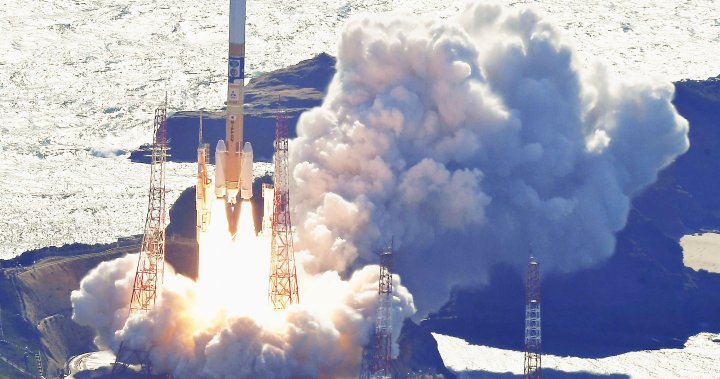Japan launched a rocket Thursday carrying an X-ray telescope that will explore the origins of the universe as well as a small lunar lander.
The launch of the H-IIA rocket from Tanegashima Space Center in southwestern Japan was shown on live video by the Japan Aerospace Exploration Agency, known as JAXA.
“We have a liftoff,” exclaimed the narrator at JAXA as the rocket soared into the sky in a burst of smoke, venturing over the vast Pacific.
Thirteen minutes after liftoff, the rocket successfully deployed the X-Ray Imaging and Spectroscopy Mission (XRISM) satellite into Earth’s orbit. XRISM aims to measure the speed and composition of intergalactic space, providing valuable insights into the formation of celestial objects and the puzzle of the universe’s creation, according to JAXA.
An HII-A rocket blasts off from the launch pad at Tanegashima Space Center in Kagoshima, southern Japan Thursday, Sept. 7, 2023. (Kyodo News via AP).
In partnership with NASA, JAXA aims to study the intensity of light at various wavelengths, temperatures of objects in space, and their shapes and brightness.
David Alexander, director of the Rice Space Institute at Rice University, recognizes the mission’s significance in unraveling the properties of hot plasma, which encompasses a substantial portion of the universe. Plasmas have potential applications in wound healing, computer chip production, and environmental cleansing.
“Understanding the distribution and dynamics of hot plasma in space will shed light on diverse phenomena such as black holes, chemical evolution in the universe, and the formation of galactic clusters,” said Alexander.
The rocket also carried a lightweight lunar lander called the Smart Lander for Investigating Moon (SLIM). The Smart Lander is expected to reach lunar orbit in three to four months, with a potential landing scheduled for early next year, as stated by the space agency.
JAXA is actively developing “pinpoint landing technology” to advance lunar exploration and landing missions on other planets. With the current landings typically deviating by approximately 10 kilometers or more, the Smart Lander aims to achieve a higher level of precision, reaching within about 100 meters of the intended target, according to JAXA official Shinichiro Sakai.

Japan’s latest space launch comes at a time when renewed interest in lunar exploration is emerging. To date, only the United States, Russia, China, and India have achieved successful lunar landings.
India accomplished a moon landing near the south pole last month, shortly after Russia’s unsuccessful lunar mission, which aimed to return to the moon after nearly half a century. In April, a Japanese private company called ispace crashed a lander during an attempted
Denial of responsibility! Vigour Times is an automatic aggregator of Global media. In each content, the hyperlink to the primary source is specified. All trademarks belong to their rightful owners, and all materials to their authors. For any complaint, please reach us at – [email protected]. We will take necessary action within 24 hours.





